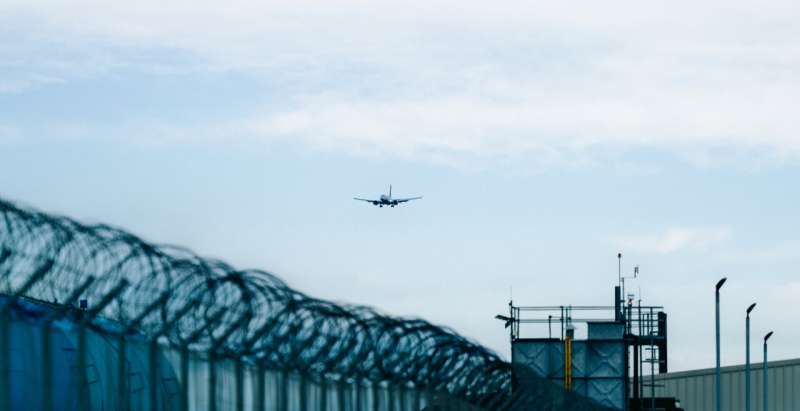
November 14, 2024 by Heriot-Watt University
Collected at: https://techxplore.com/news/2024-11-green-flight-paths-sustainable-aviation.html
“Green flight paths” between key global locations could help to fast-track fully decarbonized aviation, according to research led by an international team based at Heriot-Watt University in the United Kingdom and the American University of Sharjah in the United Arab Emirates.
The research, published in Energy and Environmental Science, recommends that a small number of long-haul flights with high passenger volumes, such as London to Dubai, could be used to establish these green flight paths by demonstrating and reporting on sustainable aviation fuels (SAF).
SAF are non-petroleum-based fuels that emit significantly fewer greenhouse gas emissions than traditional fossil-based jet fuels.
Dubai and London Heathrow airports are two of the busiest airports in the world and the first and second highest ranked in the world terms of CO2 emissions from international flights, as well as total international passengers. London Heathrow is already a world leader in SAF ambition and is working towards a target of incorporating 11% of SAF into its overall fuel usage by 2030.
SAF is compatible with existing aviation fuel systems and can be used in current aircraft engines and infrastructure without requiring any modifications. This makes SAF easier to implement since airlines can use it with their current fleets, the study noted.
The green flight paths would encourage the “dedicated large-scale investment” needed to encourage the worldwide adoption of SAF.
Professor Steve Griffiths, Vice Chancellor for Research at the American University of Sharjah, is a sustainable energy expert and lead author of the paper.
He said, “The UAE and UK are both highly dependent on long-haul flights, so have a compelling opportunity to lead the establishment of green flight paths, to demonstrate and deploy sustainable aviation fuels. Establishing green flight paths has the potential to not only drive decarbonization of the aviation sector, but also lead to international cooperation for the development of SAF, and the related clean technologies needed to achieve net-zero by 2050 on a global scale.”
Professor John Andresen, Associate Director of the Research Center for Carbon Solutions (RCCS) at Heriot-Watt University, co-authored the paper and is a chemical engineer with expertise in fuel processing technology. He said, “The concept of green flight paths is inspired by green shipping corridors, which are paving the way for net-zero shipping.
“A similar framework for prioritizing long-haul flight segments is becoming increasingly urgent, to drive the global production and use of net-zero SAF technologies.”
Currently, widely available sustainable flights are a long way from being a reality. SAF provides a potential route to changing this. Since the chemical and physical characteristics of SAF are almost identical to conventional fuels, they can be safely mixed. However, figures from 2022 show SAF production is way off track, currently sitting at 0.1% of the 2050 net zero goal that has been set by the international community.
There are a number of reasons for this lack of progress, many of which are economic, the researchers explain. SAF production is costly and in its infancy, so significant investment is needed to de-risk and reduce the costs of production. Unlocking investment is key to developing the scalable solutions that will lead to much wider uptake of SAFs.
Targeting a small number of high-volume, long-haul routes would demonstrate the economic viability of the green flight path model because it would speed up the development of commercially viable SAF supply chains, the researchers say. These targeted global locations often lie geographically close to industry clusters already working towards decarbonization.
Coupling plans for green flight paths with the growing agenda for decarbonizing whole clusters of the economy—for example, industry or transport—offers the opportunity to tackle challenges in a coordinated, holistic way, the researchers add.
The research paper also makes a strong case for the “climate justice” of green flight paths. This is because only about 10% of the world’s population currently take flights, so green flight paths rightly place the onus on countries benefiting the most from aviation to develop solutions to make it sustainable. Solutions that can be scaled out will also become increasingly important as worldwide incomes rise, along with a likely increase in demand for flights.
More information: Steve Griffiths et al, Green flight paths: a catalyst for net-zero aviation by 2050, Energy & Environmental Science (2024). DOI: 10.1039/D4EE02472A
Journal information: Energy & Environmental Science , Energy and Environmental Science

Leave a Reply